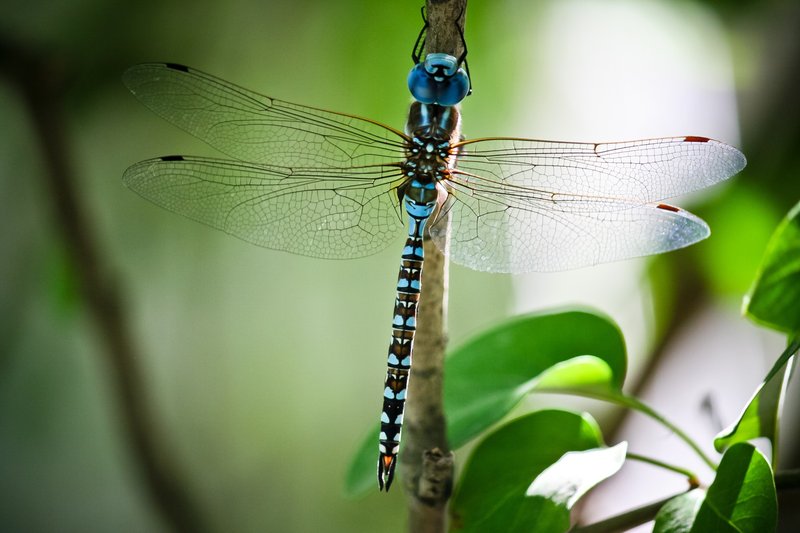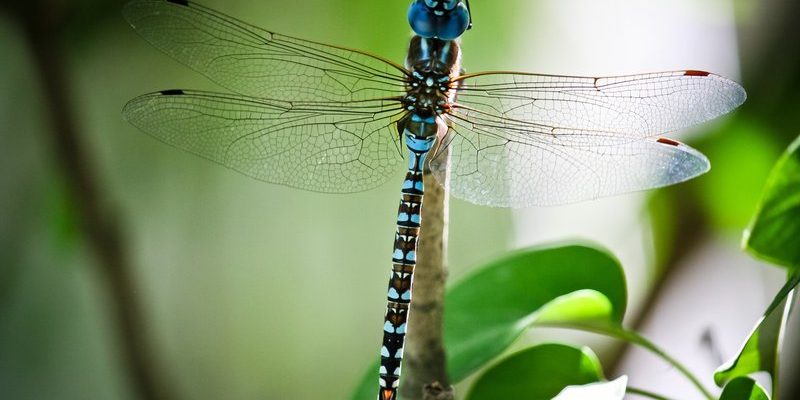
Just like a good book that reveals layers with each page, the truth about dragonflies is often hidden behind various tales. You might hear friends or even experts say things that sound intriguing but are actually not quite right. Understanding what’s fact and what’s fiction can deepen your admiration for these incredible creatures. Let’s explore these myths together!
Myth 1: Dragonflies Only Live for a Few Days
This myth is one of the most persistent ones you’ll come across. It’s easy to see why people think dragonflies have a short life. After all, when you see one buzzing around, it’s usually in the summer, flitting from flower to flower. However, the reality is quite different!
Dragonflies actually go through several life stages. They start out as eggs, which hatch into nymphs, living underwater for up to five years. During this time, they’re busy growing and eating other aquatic creatures. Once they finally emerge from the water and transform into adults, they can live for several weeks or even months. Isn’t it fascinating to think about how much time they spend hidden away before taking to the skies?
So, the next time someone tells you that dragonflies only live for a few days, you can confidently correct them. They’ve got a complex life cycle that’s pretty impressive!
Myth 2: Dragonflies Are Dangerous to Humans
You might have heard that dragonflies can be a threat to humans, but let’s set the record straight. Honestly, dragonflies are not dangerous at all! They’re harmless and, in fact, quite beneficial. Think of them as nature’s little pest controllers.
Dragonflies primarily feed on mosquitoes and other small insects, making them a great ally in the battle against pesky bugs. They use their incredible flying skills and sharp eyesight to hunt down their prey. So, while they might appear fierce with those big eyes and agile bodies, they’re really just doing their job.
If you see a dragonfly hanging around your backyard, consider it a good sign. It means the environment is healthy, and it’s working hard to keep those annoying mosquitoes at bay!
Myth 3: All Dragonflies Are the Same
You might be surprised to learn that there are over 5,000 species of dragonflies worldwide! That’s a whole lot of variety, right? Each species has unique characteristics, colors, and behaviors. For example, some dragonflies are vibrant blue or green, while others are more muted in color.
These differences aren’t just for show. Some dragonflies are better suited to certain environments, like ponds or streams, while others thrive in drier areas. By paying attention to these varying traits, we can learn a lot about their habitats and ecosystems.
So, the next time you spot a dragonfly, take a moment to observe its colors and behaviors. You might just be looking at a species you’ve never seen before!
Myth 4: Dragonflies Can Only Fly Forward
Here’s the thing: dragonflies are acrobatic flyers! If you’ve ever watched one in action, you know they zoom around with incredible speed and agility. But many people think that they can only fly in one direction—forward. Wrong!
Dragonflies can fly in all directions: forward, backward, and even hover in place. This remarkable flying ability comes from the way their wings work. Each wing can move independently, which gives them the flexibility to maneuver quickly. They can dart away from predators or swoop in to catch their next meal with ease.
Imagine a tiny helicopter, zipping around, defying expectations. That’s what dragonflies do every time they take flight!
Myth 5: Dragonflies Are Just Pretty Insects
While it’s easy to be mesmerized by the beauty of dragonflies, reducing them to just “pretty insects” misses the bigger picture. Dragonflies play a vital role in the ecosystem. They’re not just here to look good!
As natural predators, dragonflies help maintain the balance of insect populations. They control mosquito populations, which is especially important in areas where those little pests can spread diseases. Additionally, dragonfly nymphs contribute to aquatic ecosystems by feeding on other small invertebrates, keeping things in check below the water’s surface.
So, the next time you admire a dragonfly’s stunning wings, remember that they’re doing their part to keep our environment healthy. They’re beautiful and incredibly important!
Myth 6: Dragonflies Are a Sign of Bad Luck
In some cultures, dragonflies have been linked to bad luck or death. However, these associations vary widely across different societies. For many people, dragonflies symbolize change, transformation, and adaptability. They are often seen as messengers that encourage us to embrace new beginnings.
Instead of fearing the presence of a dragonfly, consider what it might represent in your life. Maybe it’s time for you to take on a new challenge or change your perspective on a situation. Just like dragonflies undergo metamorphosis in their lives, we can all experience growth and change.
So, let’s celebrate dragonflies for the beautiful symbols they are rather than dismissing them as omens of misfortune!
Dragonflies are more than just stunning insects flitting around our gardens; they’re complex creatures with fascinating lives. By debunking these common myths, we gain a deeper understanding of their importance in nature and our ecosystems.
So, the next time you see a dragonfly, take a moment to observe its beauty and remember all the hard work it does behind the scenes. They may be small, but their impact is mighty. Let’s appreciate them for the remarkable creatures they are!

